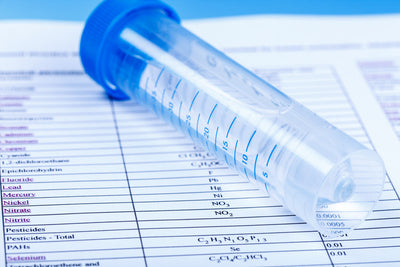4 Things To Know Before Testing Your Home’s Water For Lead
RSS
Eric Roy, Ph.D. | Scientific Founder
Since the lead crisis in Flint put lead contamination in the national spotlight, our Tech Support Team is frequently asked questions about testing a home’s water for lead. Many who reach out to us do so after having been duped by "testing companies" looking to make a quick buck. This article discusses how to test your home's water for lead accurately & cost-effectively.
Check For Free City Programs
Some large cities (like Washington DC, NYC, Chicago) have programs in place where residents can submit samples to the city for free lead testing. We strongly encourage people to take advantage of this free service if it's available to them.
Ignore Marketing Gimmicks And Find An Accredited Laboratory For Lead Testing
Most of the consumer “test kits” you find at hardware stores or large online retailers are almost always for low cost “screening” tests that are notorious for false alarms and inconclusive results, which allows the lab to upsell you on a more sensitive and accurate test. Don't be fooled by marketing claims that a kit is "EPA Recognized" or "Tests to EPA Standards"... they don't mean anything. With lead, you should simply find an accredited water quality lab in your area, and request their test kit. We recommend finding a lab that uses EPA Method 200.8, which is an Inductively Coupled Plasma, Mass Spectrometry (ICP-MS) based method that gives accurate results at low concentrations.
Sample Properly From The Faucet
Because lead contamination occurs when water sits in lead-containing plumbing pipes, solder, and connections, it’s important that you sample from the faucet and collect at a time when your home’s water has not been used for at least 6 hours (like first thing in the morning)
We recommend collecting 3 samples: one as soon as you turn on the faucet (also known as a "first draw"), and separate samples after the water has been running for 30 seconds, and 2 minutes. The reason for collecting multiple samples in this interval is to sample water that sat overnight in different parts of the home’s plumbing and service line.
Get Help Interpreting Lead Test Results
If all samples come back at zero, you’re probably in the clear for lead. This is a good thing!
If any of the samples come back above zero, the interpretation gets quite a bit more complicated because EPA’s statements on lead toxicity and regulations are not in alignment. On one hand, EPA states that there is no safe level of lead, which would imply that lead concentrations should be zero. However, EPA has established a 15 ppb “Action Level” for lead… which most people (and some media outlets) interpret to mean “if my water is under 15 ppb, it’s safe.” Unfortunately, that’s simply not true, because the 15 ppb Action Level threshold was established to tell whether or not city-wide corrosion control measures are having problems, not if a single sample contains too much lead. Furthermore, the EPA allows for up to 10% of samples collected under the Lead and Copper Rule to test above the 15 part per billion Action Level (with no upper limit), and the city remains in compliance.
The reality is, if your water has lead in it after letting water sit in pipes for 6 hours or more, we highly recommend taking steps to reduce exposure, whether it's using a point of use water filter that is rated to remove lead, or allowing your water to run for 2 minutes before using it for drinking, cooking, or washing food.
We encourage everyone to take advantage of Hydroviv’s “Help No Matter What” approach to Technical Support when it comes to water. Even though we do not offer lead testing, our water quality experts are happy to give advice through all stages of the lead testing process, free of charge, to make sure that you get answers in the most efficient way possible. We do not take money from test labs for referrals.
Related Articles:
Does New York City Tap Water Expose More People To Lead Than Flint?Pittsburgh's Lead Level Exceeds EPA Limits In 2016
Does Your Home's Pre-2014 Plumbing Contain Lead?




